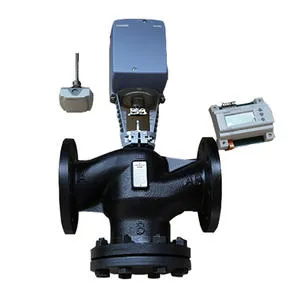Control valves are devices commonly used in industrial processes to regulate the flow of a fluid (liquid or gas). By controlling the opening degree of the valve, we can also achieve temperature control. How do you control temperature with a control valve?

1. Temperature regulation principle
The control valve realizes temperature control by adjusting the flow of fluid. When the temperature needs to be raised, the control valve can increase the flow rate of the fluid and transfer more heat to the controlled medium, thereby increasing the temperature. When the temperature needs to be lowered, the control valve can reduce the flow of the fluid, reduce the heat transfer, and thus lower the temperature.
2. Temperature detection and feedback
In the process of temperature control, it is necessary to use a temperature sensor to monitor the temperature of the controlled medium. These temperature sensors transmit real-time temperature information to the control system to adjust according to the actual temperature conditions.
3. Control system
The control system is the core of the temperature control process. It receives the signal from the temperature sensor, and judges whether it is necessary to adjust the opening degree of the control valve according to the preset temperature setting value. If the temperature deviates from the set value, the control system will adjust the flow of the fluid through the control valve to achieve stable temperature control.
4. Valve adjustment
The opening degree of the control valve directly affects the flow of the fluid, thereby affecting the control of the temperature. Normally, the control system will gradually adjust the opening of the control valve according to the needs, so as to gradually approach the set temperature.
5. Feedback loop
In order to ensure the accuracy and stability of temperature control, the control system usually has a feedback loop. A feedback loop constantly compares the actual temperature to the set temperature, and if there is a deviation, the control system adjusts the opening of the control valve accordingly to keep the temperature near the set point.
To sum up, using a control valve to regulate temperature is a closed-loop control process based on a temperature sensor and a control system. Through continuous monitoring and adjustment, the control valve can precisely control the flow of fluid, so as to achieve stable temperature control.